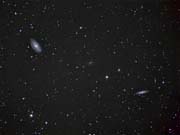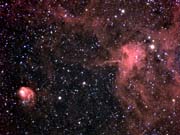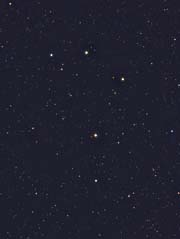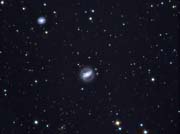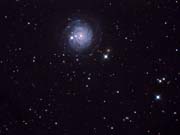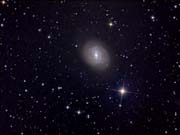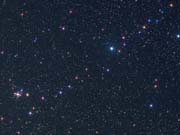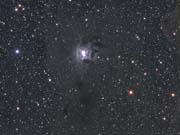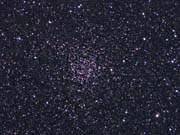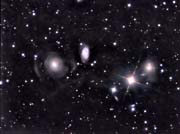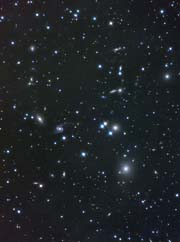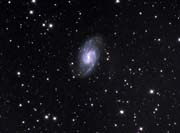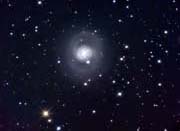|
The evening of Wednesday 10th February 2016 was forecast
to be clear, but started out cloudy. I was to be out for a
couple of hours earlier and hoped to image the 'Question
Mark' in Cetus, leaving the system running unattended, but
it was not to be. But it did clear later and I had a go at
another target, the interesting small mag 10.9 galaxy NGC
3504 in Leo Minor. Still not enough time to get a full set
of data before again the clouds rolled in, but enough for a
starter. As you can see it's unusual - distinctly barred and
with a faint ring. The other face on spiral is mag 12.3 NGC
3512. A smattering of faint background galaxies. At the
moment, 8 x 10 minutes Luminance binned 2x2, QSI 683 on
RC10.
Hopefully I will have an opportunity to complete the
image this season.
I was inspired to try for this by Adam Block's superb
image here.
And when I study that more closely I realise that the 'ring'
is actually made up of two diffuse extended spiral arms.
Fascinating! Perhaps it will be more apparent in my image
when I have collected more Luminance and colour data.
UPDATE After some weeks of
poor weather and a couple of clear nights missed while I was
on the Indonesia Eclipse tour, I managed to obtain more data
including colour on the night of 31st March. So the finished
image consists of 18 x 10 minute luminance and 7 x 10
minutes each RGB, all binned 2x2.
Full size
|
